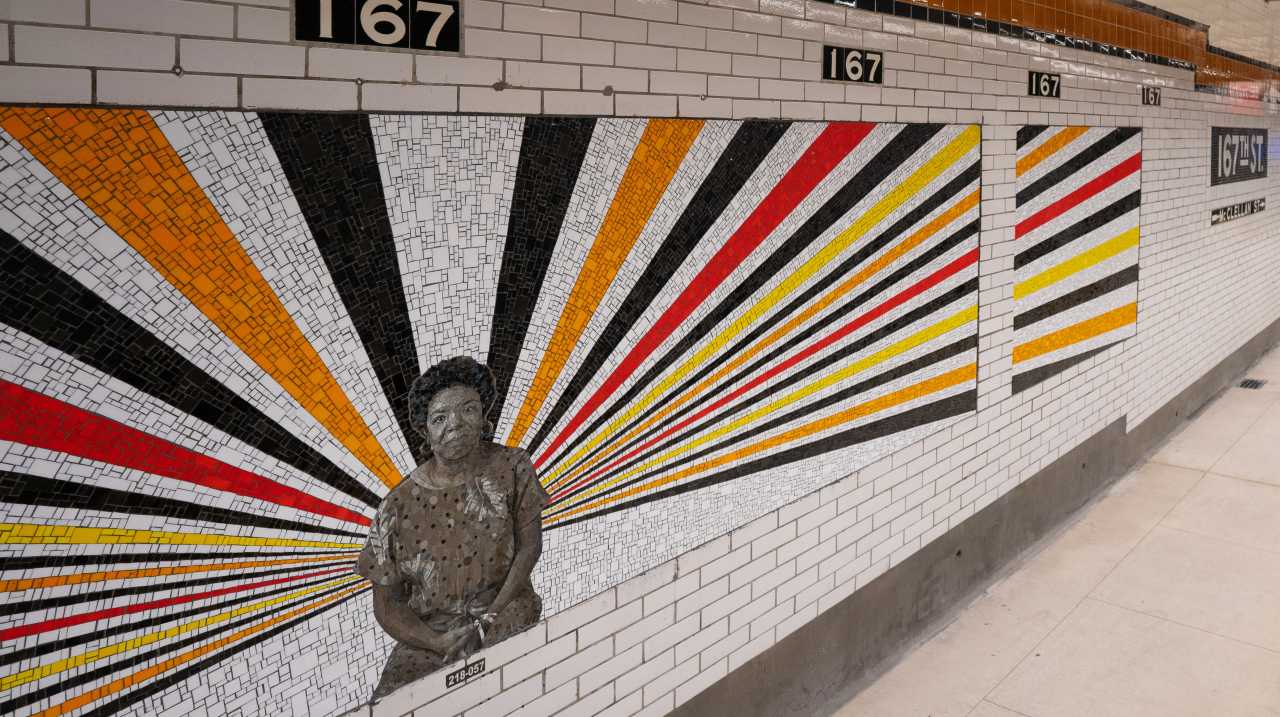Some of the best art in New York can be found not inside the walls of a museum or a trendy Chelsea gallery, but under the sun and sky in the Hudson Valley. Located near the town of Cornwall on the west side of the Hudson River, Storm King Art Center is arguably the state’s best collection of outdoor art, and well worth the trip on Metro-North.
Here’s a quick guide to Storm King, what you’ll see around the grounds, and how to get there. (Tip: Bookmark their map before you head out.)
HISTORY
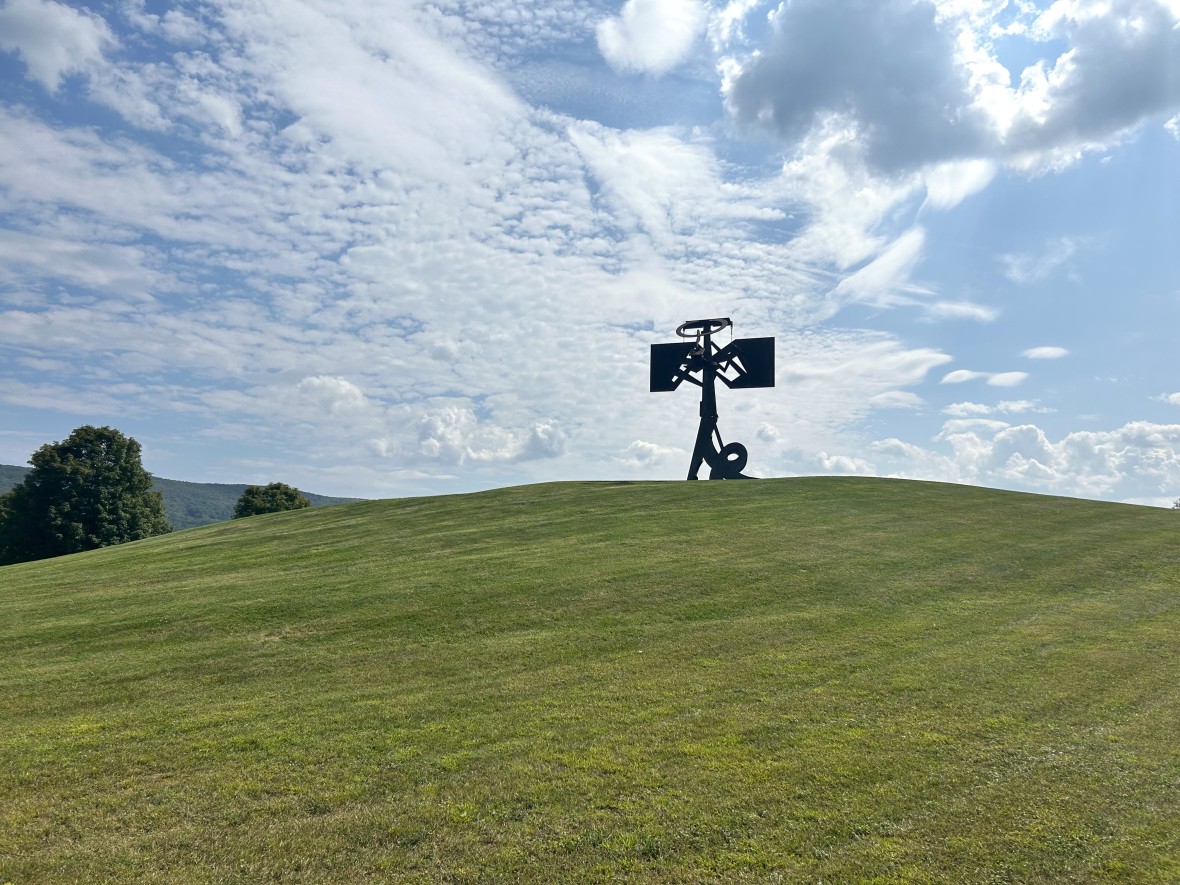
The Storm King Art Center was founded and opened in 1960 by Ralph E. Ogden and H. Peter Stern, who were business partners at Star Expansion Company, a local factory that produced metal fasteners. Sited on a 180-acre piece of land, the museum was originally a home for works by artists from the Hudson River School, but it soon became an exhibition space for sculpture as well. The purchase of 13 sculptures by the American Abstract Expressionist artist David Smith in 1967 marked the expansion of the museum beyond its lone building and into the grounds themselves, with pieces placed in the surrounding landscape.
Today, with over 250 works on the property covering nearly 500 acres, Storm King is one of the largest collections of contemporary outdoor sculpture in the United States, and a unique destination for art (and nature) lovers.
WHAT’S THERE
More than 150 artists have their works on display at Storm King, including giants of the modern art world like Sol LeWitt, Alexander Calder and Louise Bourgeois. Among the center’s more notable pieces are:
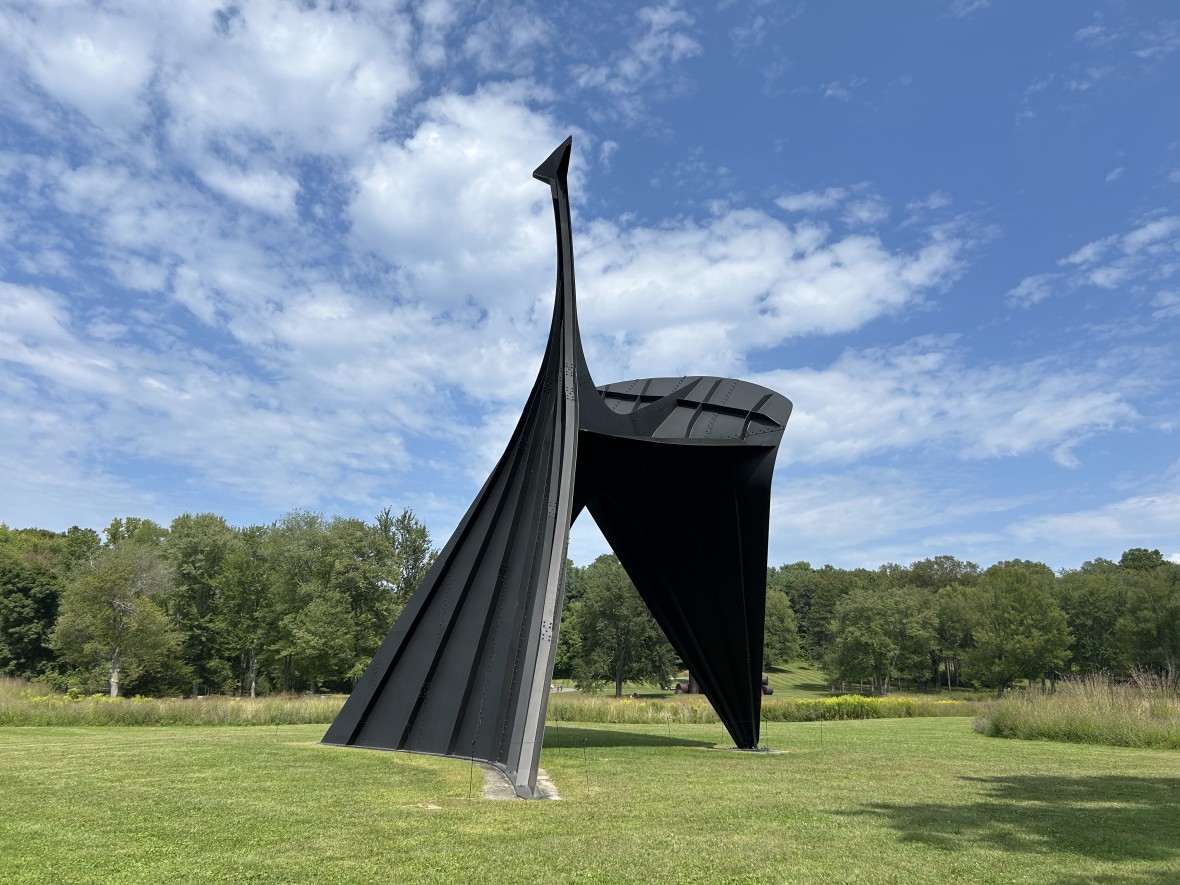
Alexander Calder, The Arch (1975)
One of the first pieces you see when you walk onto the grounds, this 50-foot-tall steel sculpture is one of five works on site by Calder, a prominent American sculptor who was known primarily for his colorful mobiles. The Arch, completed a year before his death, flows and bends at monumental scale, blooming into the air.
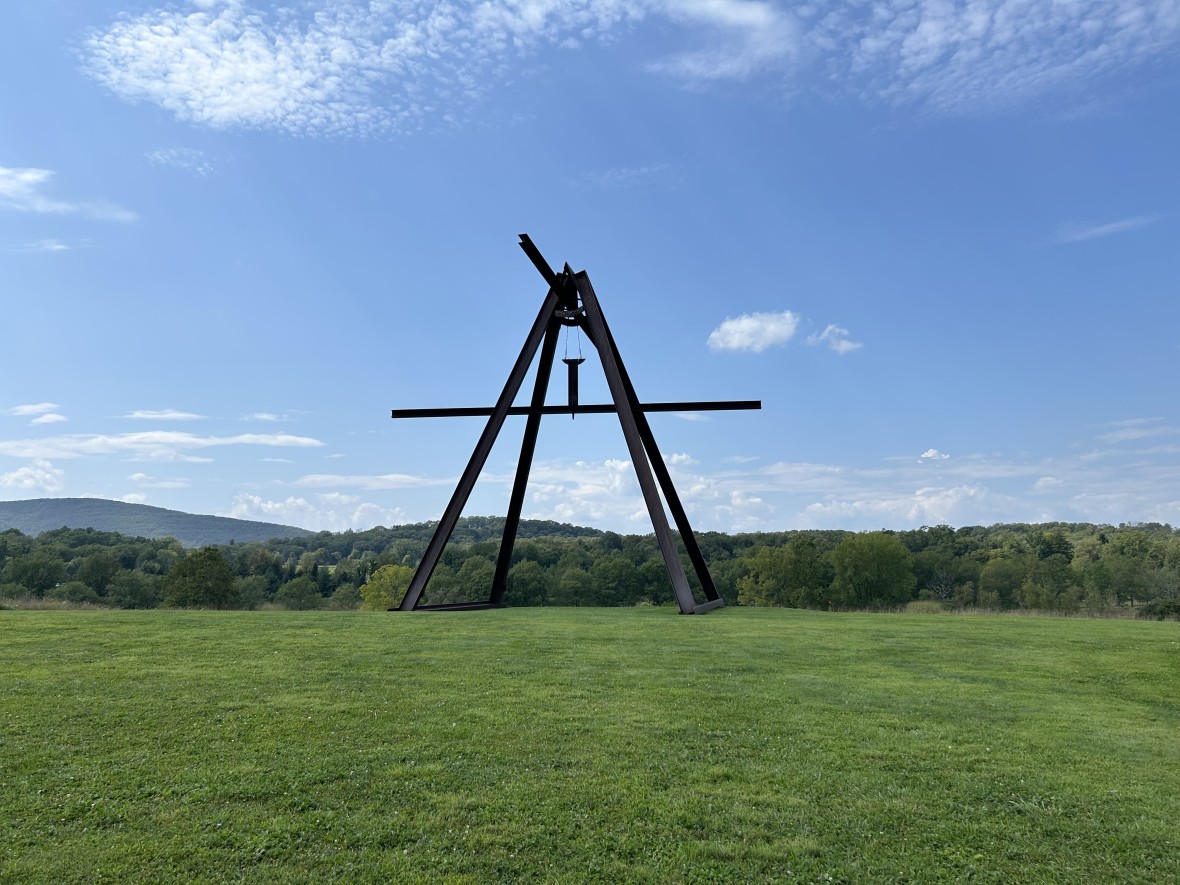
Mark di Suvero, Pyramidian (1987/1998)
This 65-foot-tall sculpture dominates the South Fields, visible from a distance with its beams converging in a skyward point. The beam in the middle, originally a bench on the ground when the piece was installed in 1987, was hoisted up and suspended with cables a decade later, giving the sculpture the feel of a building under perpetual construction.
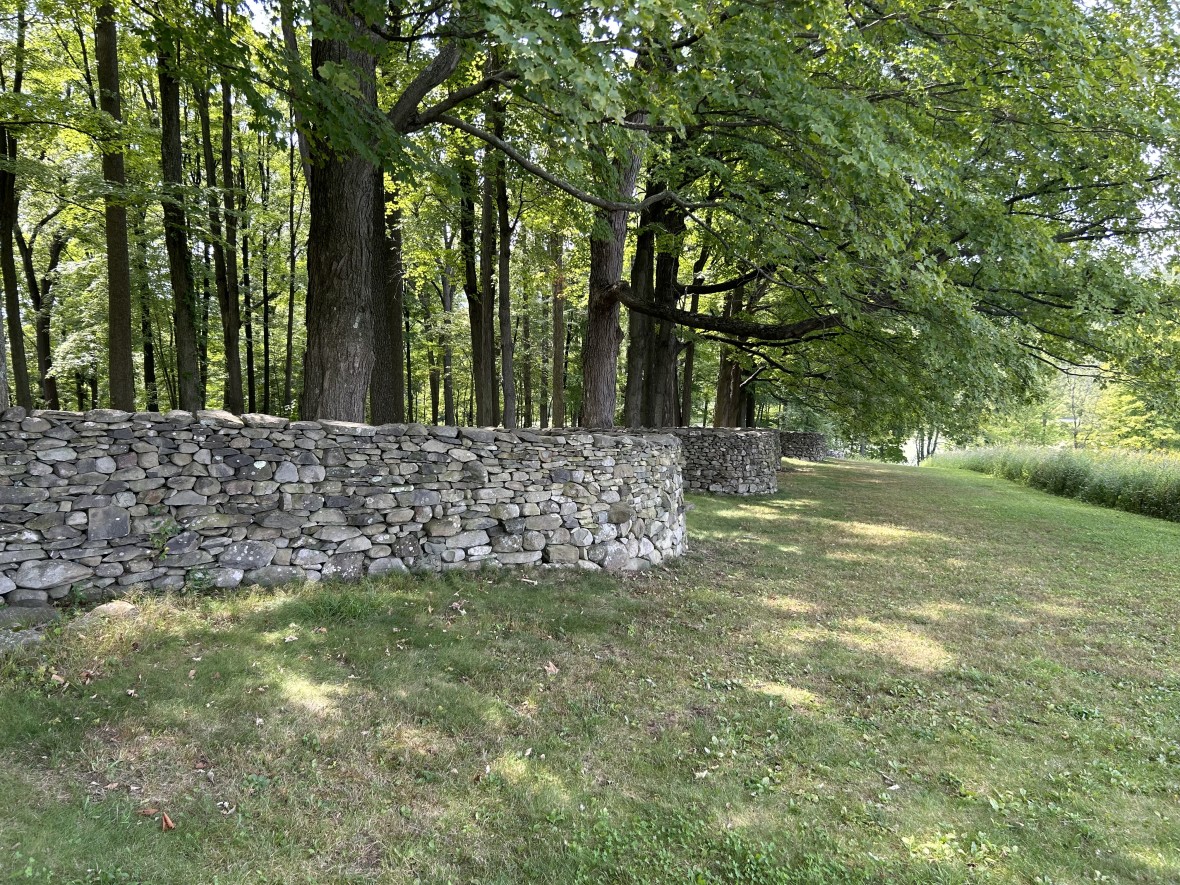
Andy Goldworthy, Storm King Wall (1997-98)
Stretching half a mile from Storm King’s western boundary and appearing as if it dips into and reemerges from a pond, this piece was built in part out of the remnants of an old stone wall that the artist found in the nearby woods. The stones were shaped to fit each other, with no binding agents used to hold the wall together.
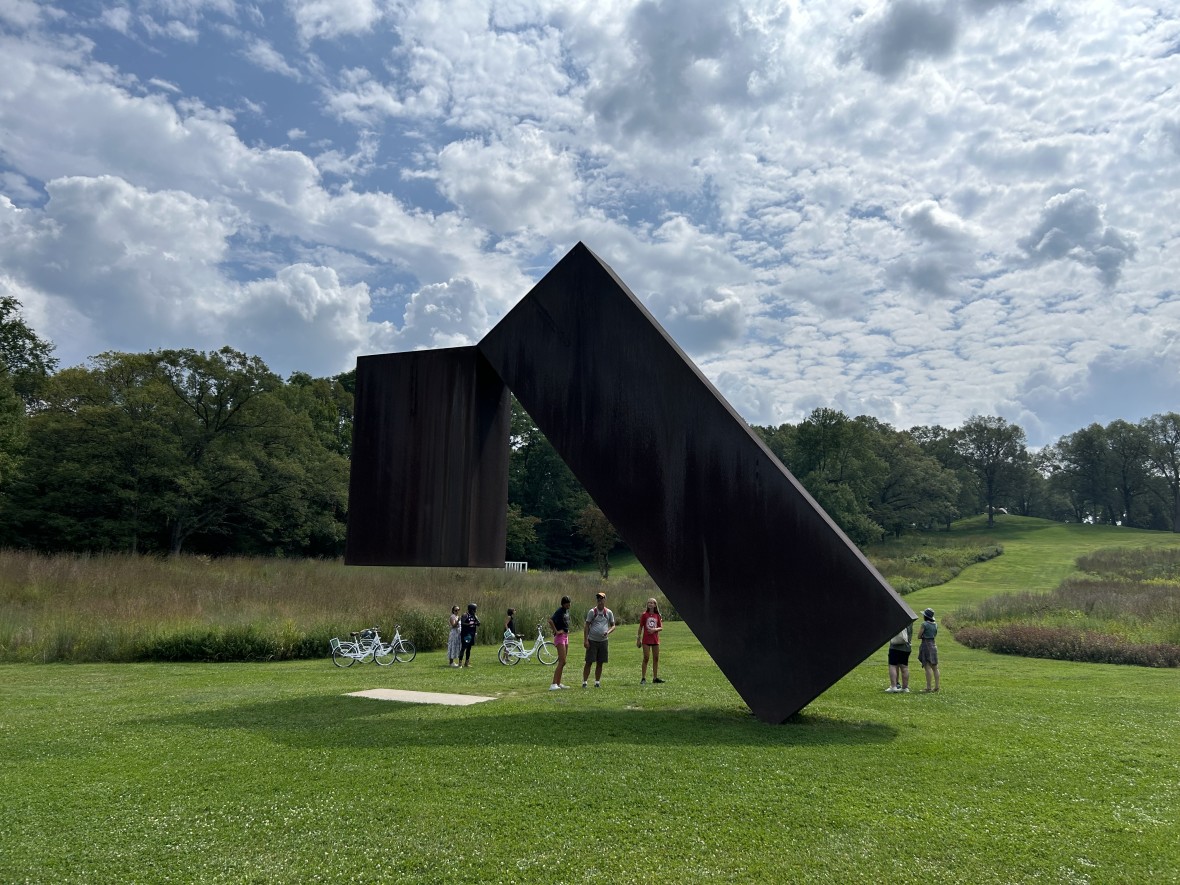
Menashe Kadishman, Suspended (1977)
A popular photo spot for visitors, Kadishman’s sculpture appears to float and balance in mid-air despite the massive size and apparent weight of its weathered steel construction, making it one of Storm King’s more alluring and beguiling pieces.
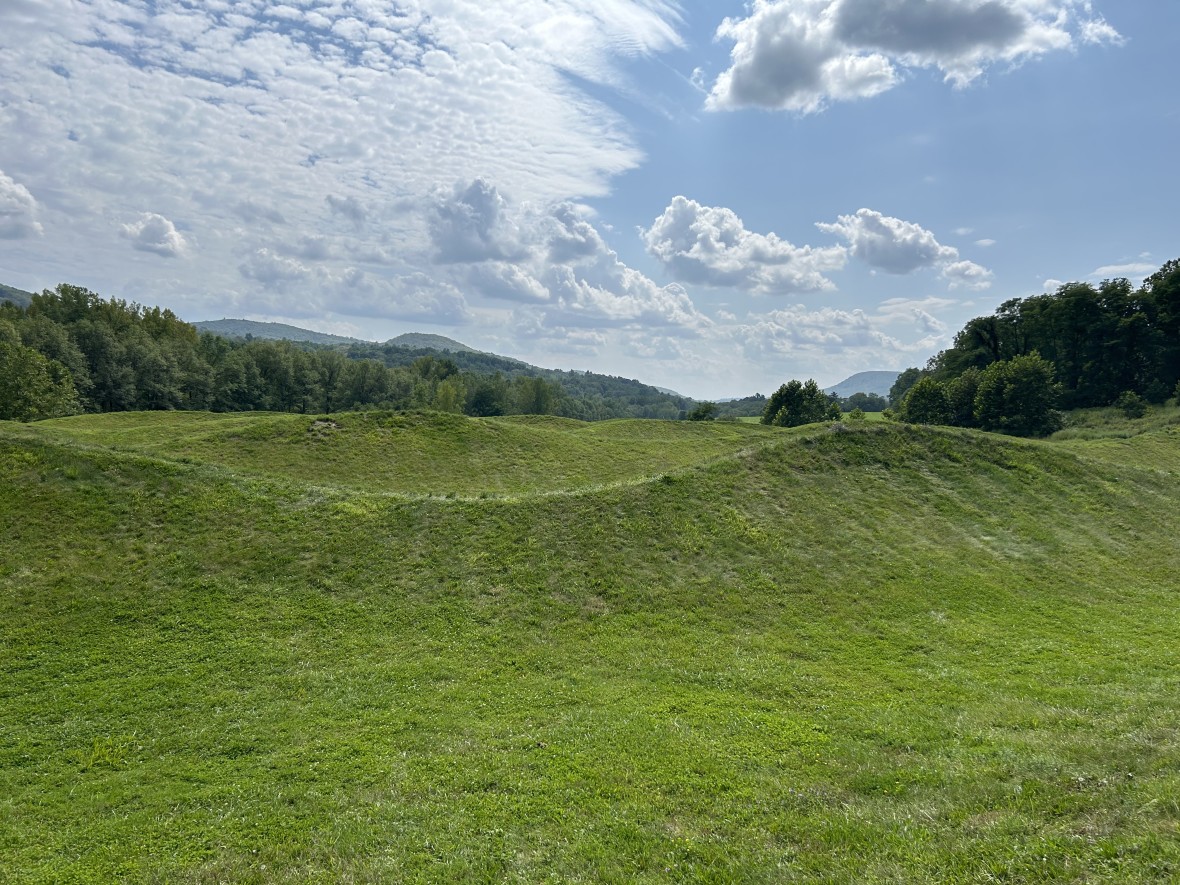
Maya Lin, Storm King Wavefield (2007-08)
Made up of seven 400-foot-long hills across 11 acres of space, this massive installation from the creator of the Vietnam Veterans Memorial brings to mind undulating waves made of grass, with valleys and troughs cutting through the swells. The design allows visitors to climb and descend the hills, changing their line of vision and perception of the piece as they interact with it.
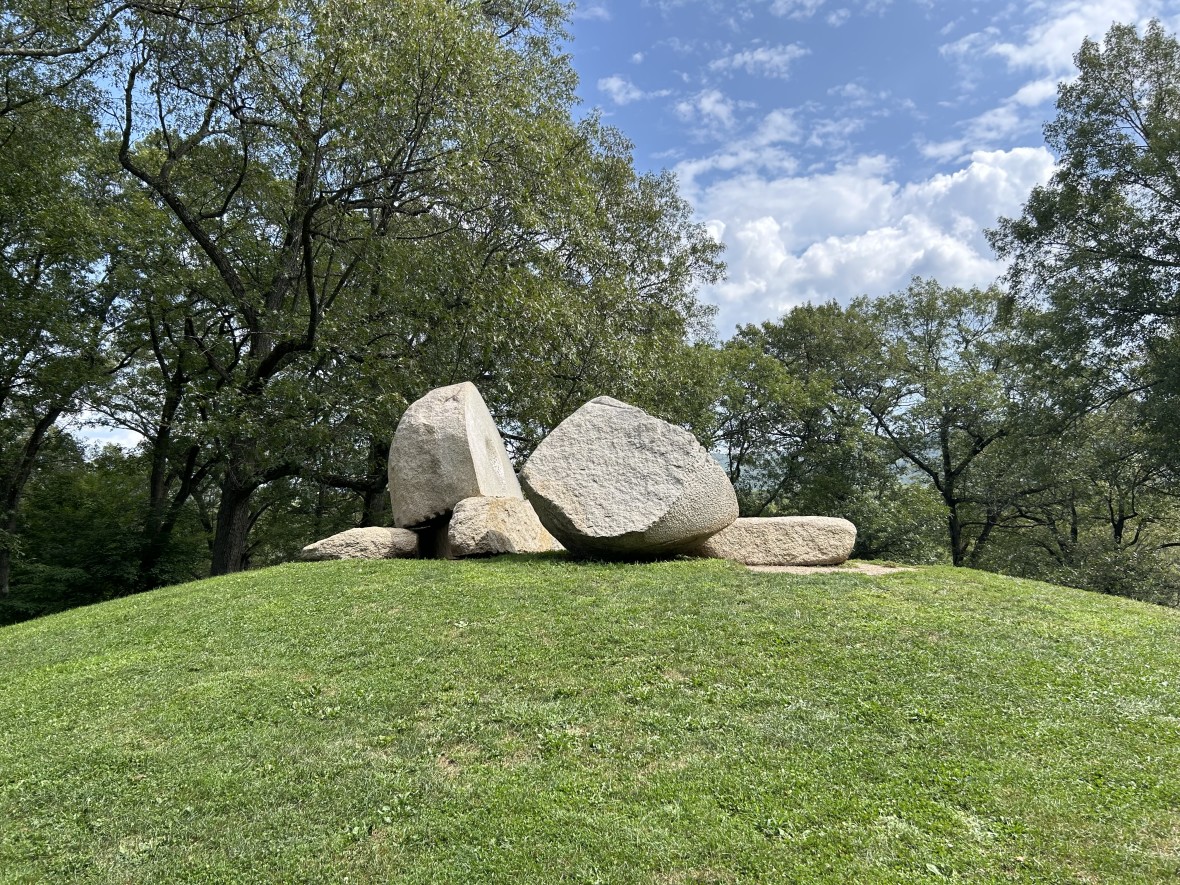
Isamu Noguchi, Momo Taro (1977-78)
Consisting of a boulder split in two with a hollow space in between and inspired by the Japanese folk tale of the momotaro, or the Peach Boy, Noguchi’s stone sculpture brings to mind an egg cracked in two and lies within his particular aesthetic of rounded and solid designs that nonetheless feel light and open.
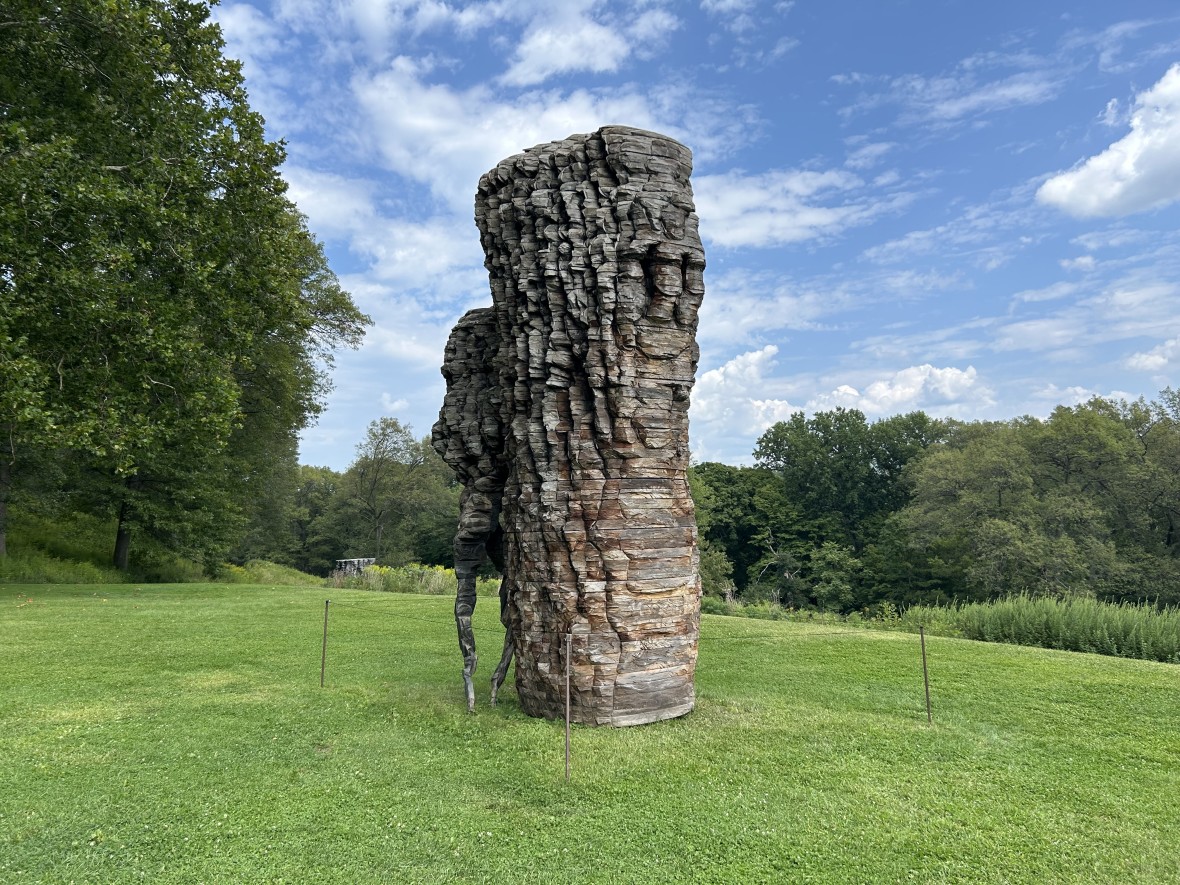
Ursula von Rydingsvard, Luba (2009-10)
This cedar-wood sculpture resembles a petrified tree coming apart in sections, which fits with von Rydingsvard’s assembly of the piece, cut freehand with a saw, stacked, and bound with glue. The addition of cast bronze and graphite provides a modern component to this otherwise natural piece.
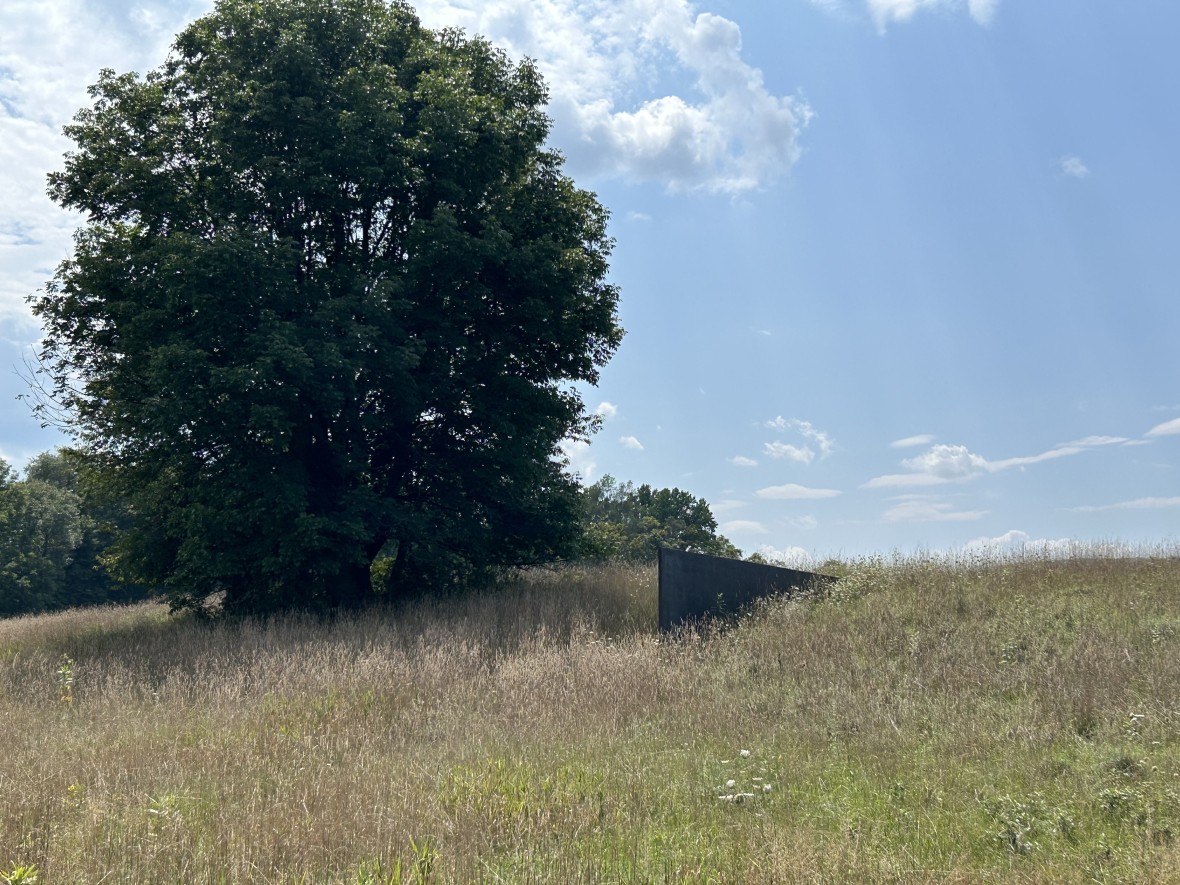
Richard Serra, Schunnemunk Fork (1990-91)
This site-specific commission consists of various steel ridges that seemingly poke out of the ground. The title is a reference to the nearby Schunnemunk Mountain; the metal plates, which are partially buried, transform the space with their interruptions of the land, with the interplay of the two changing depending on your vantage point.
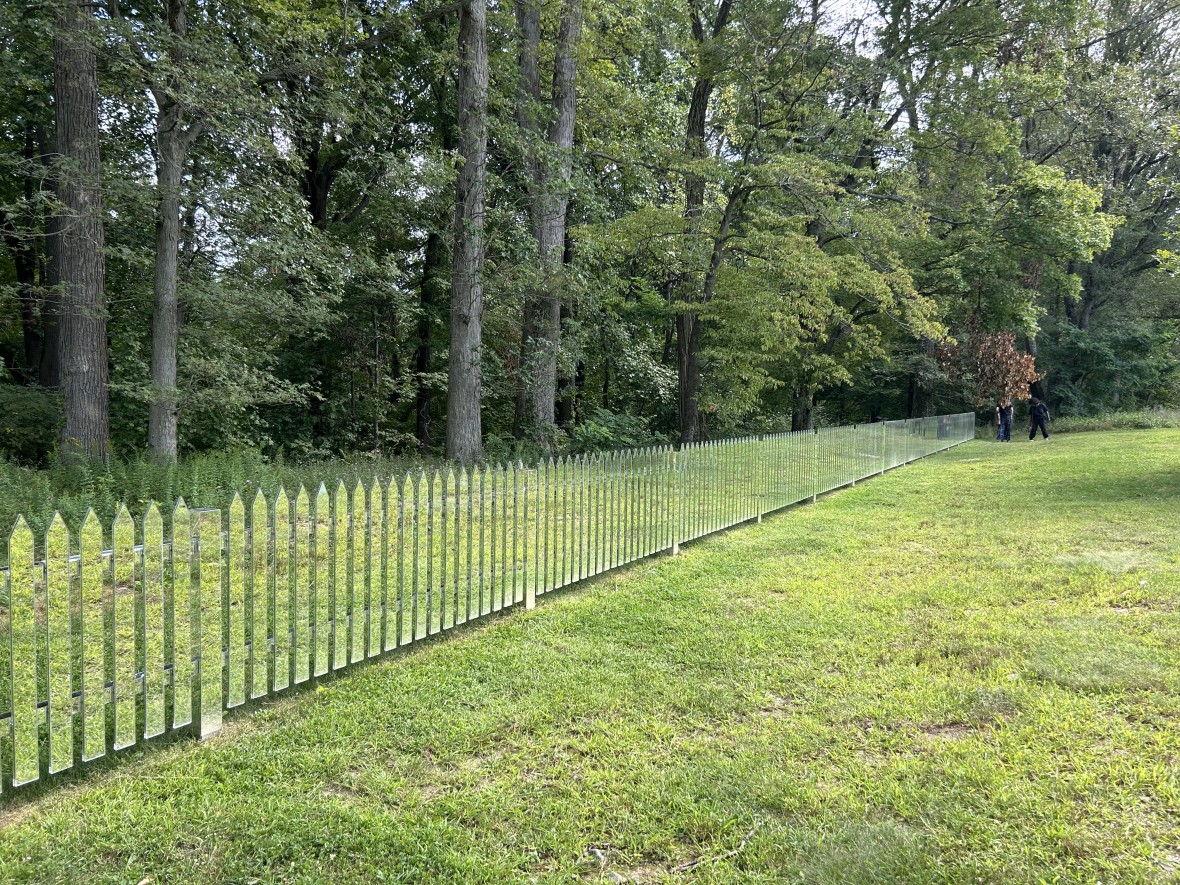
Alyson Shotz, Mirror Fence (2003)
This picket fence made of aluminum and Starphire mirror stretches for 138 feet in a straight line near the eastern edge of Storm King, simultaneously creating a boundary yet not extending far enough to be an impassable obstacle.
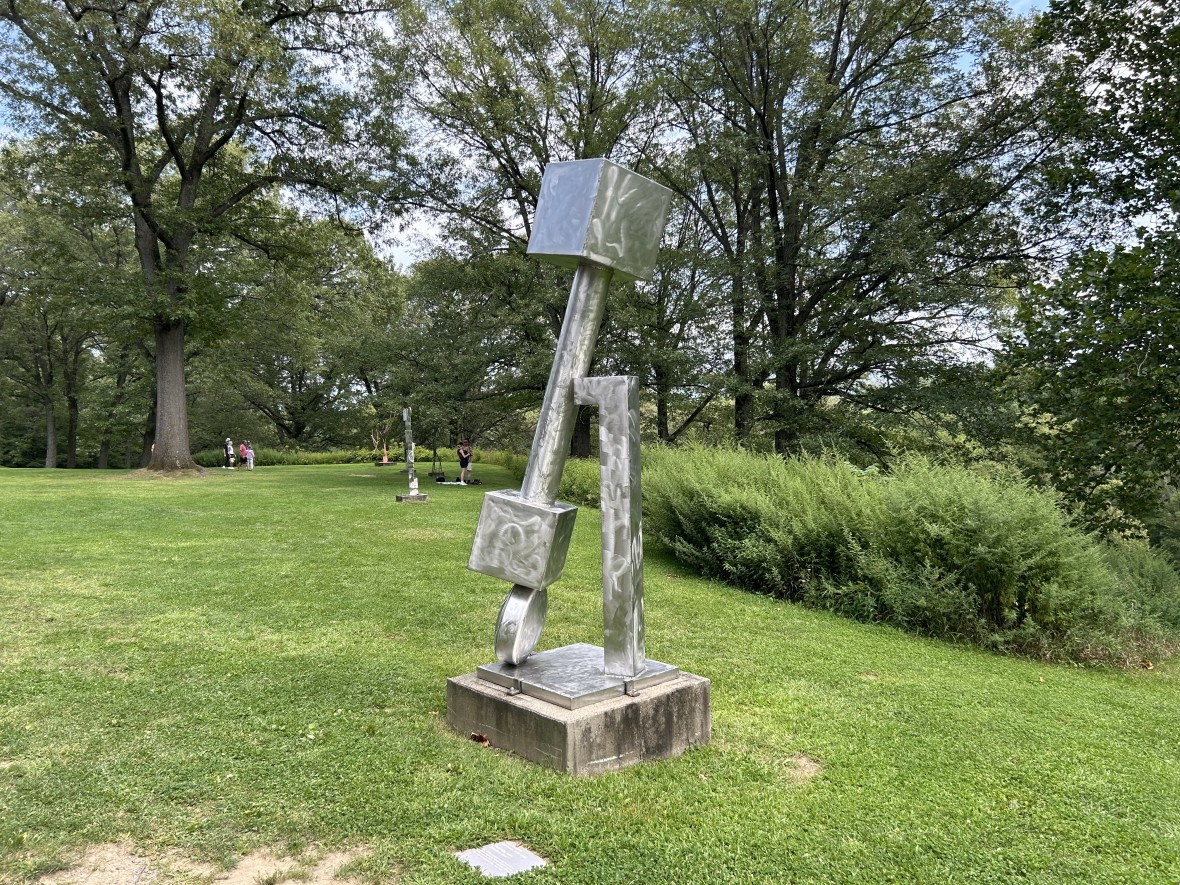
David Smith, Cubi XXI (1964)
Smith is the most represented artist at Storm King, with 14 pieces on display, including Cubi XXI, which is one of 28 stainless steel sculptures the artist created between 1961 and 1965. Resembling a dumbbell balanced on a coin, the piece is reminiscent of Cubist painting and sculpture, both abstract and representative.
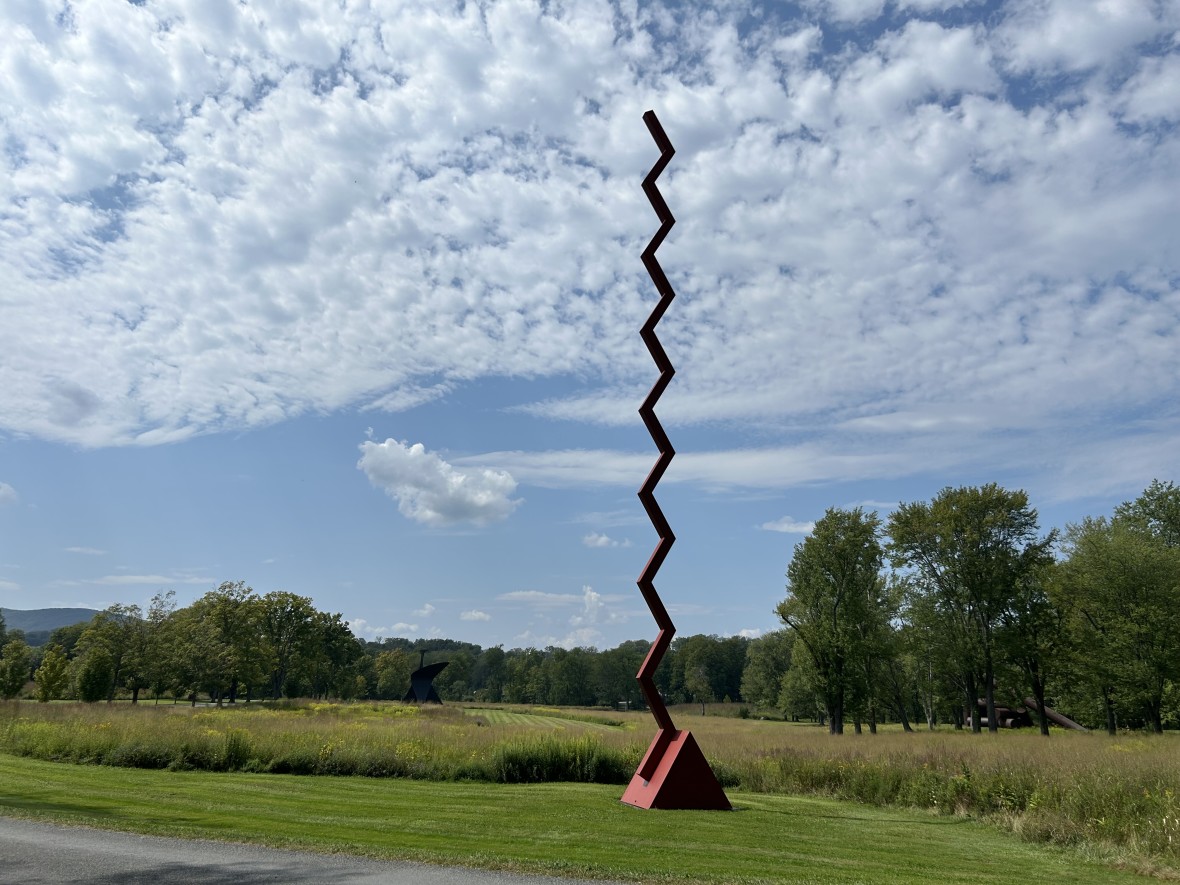
Tal Streeter, Endless Column (1968)
The tallest work at Storm King, Endless Column stands 69 feet, squiggling into the sky and immediately catching the eye with its bright red color. Essentially a scribble made three-dimensional, this steel piece is one of most iconic works on display on the grounds.
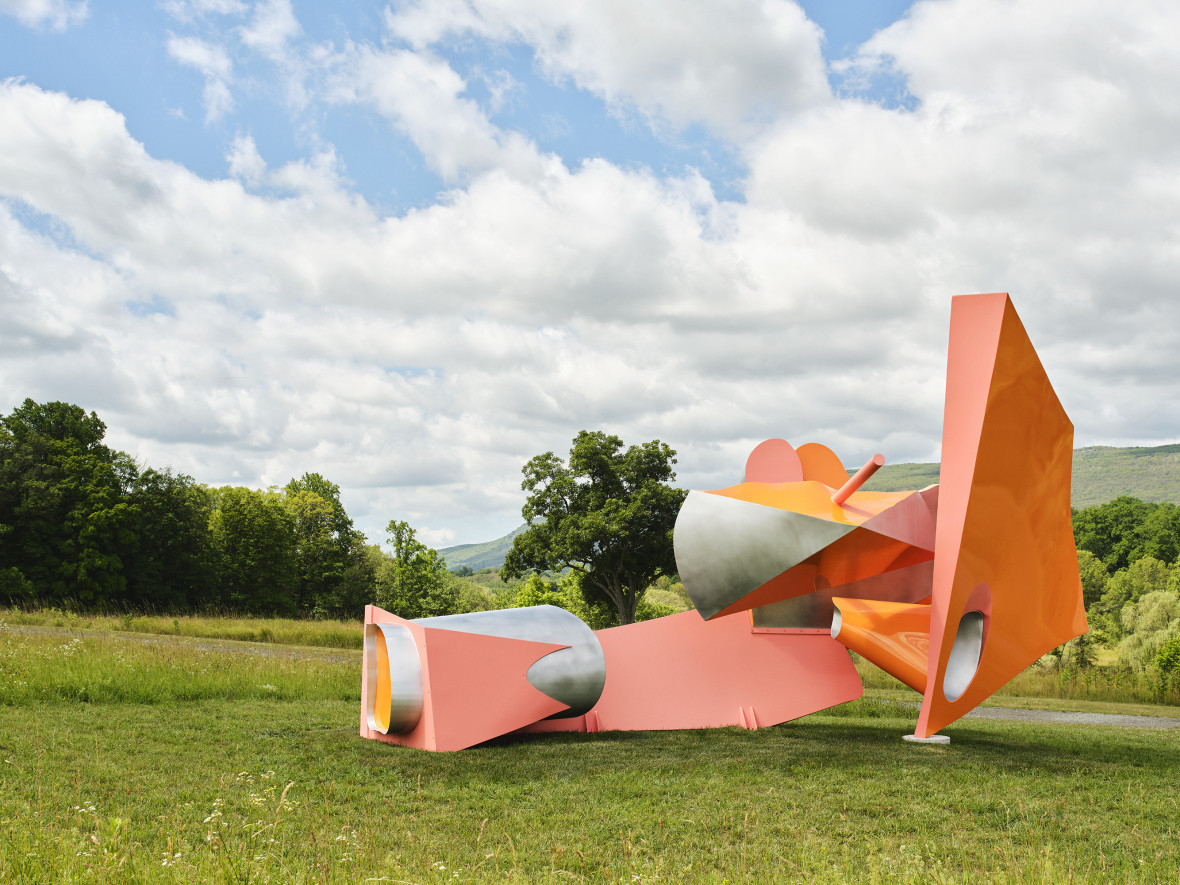
Storm King also has temporary exhibitions on display throughout the year. Currently, the museum is showing six new sculptures by American artist Arlene Shechet in an exhibit titled Arlene Shechet: Girl Group, which will run through November 10.
WHEN TO GO

Storm King Art Center is open year-round, rain or shine, Wednesday through Monday, from 10 a.m. to 5:30 p.m., with later closing hours on Saturdays through August 31. Final entry to the museum is 90 minutes before closing time.
Spring and summer are the most popular times to visit but fall and winter also make for excellent times to see the sculptures on display. In particular, Storm King during a snowfall is a striking experience, and the grounds on a crisp autumn day are incredibly pleasant. Just make sure to dress appropriately. If you need a break from the outdoor elements, check out the Museum Building, which hosts Storm King’s indoor sculptures and is open from 10 a.m. to 5 p.m.
HOW TO GET THERE
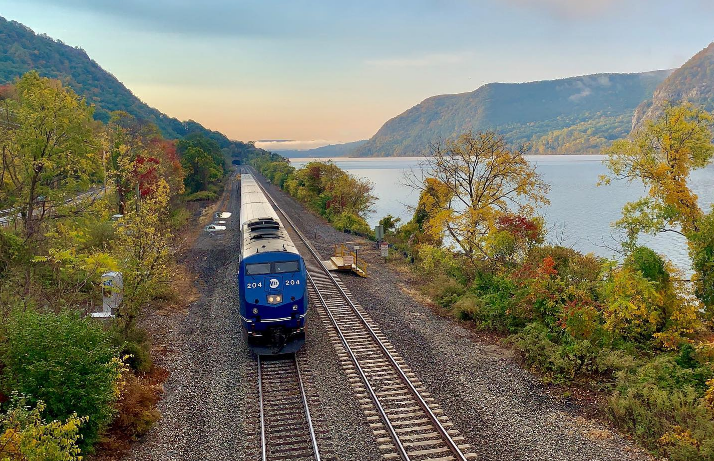
Visitors can reach Storm King by taking the Metro-North's Hudson line from Grand Central Terminal (if coming from NYC) to Beacon, a ride of roughly an hour and a half. From there, it's about a 20-30 minute car ride. During the summer on Saturdays and Sundays, Storm King offers round-trip free shuttle service from the Beacon Metro-North station.


